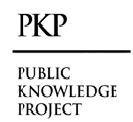Nuclear Magnetic Resonance (NMR) Spectroscopy for the Examination of Food Composition, Fermentation, and Metabolic Alterations
Keywords:
NMR; food science; multivariate statistical analysis; food quality.Abstract
We detail the three main types of nuclear magnetic resonance (NMR) methods used to analyze foodstuffs and provide examples of each. Two approaches can be taken here: one involves studying the food of interest using various complementary NMR methodologies to get a complete picture of its structure and composition; the other involves using the food's specific problem (food fraud, safety, traceability, geographical and botanical origin, farming methods, food processing, maturation and ageing, etc.) to determine which NMR methodology is most suited; and lastly, one can start with a single NMR methodology and develop a wide range of applications to address common food-related challenges and other food-related aspects using that methodology. One of the most potent methods for studying chemical reaction processes, analyzing sample components, and determining compound structures is nuclear magnetic resonance (NMR) spectroscopy. Initial applications of nuclear magnetic resonance (NMR) in the investigation of food moisture were as a quick and noninvasive analytical tool. Oil, protein, and carbohydrate analysis can reveal a food's structural composition. More and more, food scientists are using NMR in conjunction with multivariate statistical data. Despite its limitations in sensitivity and technical understanding, nuclear magnetic resonance (NMR) remains a powerful tool with promising future applications in food research. In this overview, we will look at how nuclear magnetic resonance (NMR) can be used to analyze various foods, such as oils, red wines, honey, milk, fruits, and vegetables. NMR has many uses: it can detect chemicals rapidly, determine where species came from, evaluate food quality, expose fraud, and estimate how long food will stay fresh.
Downloads
References
Alberdi-Cedeño, J., Ibargoitia, M. L., & Guillén, M. D. (2019). Monitoring of minor compounds in corn oiloxidation by direct immersion-solid phase microextraction-gas chromatography/ mass spectrometry. FoodChemistry, 290, 286-294.
Buckland, G., & Gonzalez, C. A. (2015). The role of olive oil in disease prevention: a focus on the recent epidemiological evidence from cohort studies and dietary intervention trials. British Journal of Nutrition, 113(Suppl. 2), S94-S101. http://dx.doi.org/10.1017/ S0007114514003936. PMid:26148926.
Cai, S., Zhang, Y., Xia, F., Shen, G., & Feng, J. (2019). An expert system based on 1H NMR spectroscopy forquality evaluation and adulteration identification of edible oils. Journal of Food Composition and Analysis,84(2), 103316
Alonso-Salces, R. M., Holland, M. V., & Guillou, C. (2011). 1H-NMR fingerprinting to evaluate the stabilityof olive oil. Food Control, 22(12), 2041-2046.
Curti, E., Pardu, A., Vigo, S., Sanna, R., & Anedda, R. (2019). Non- invasive monitoring of curd syneresisupon renneting of raw and heat-treated cow’s and goat’s milk. International Dairy Journal, 90, 95-97.
D’Imperio, M., Gobbino, M., Picanza, A., Costanzo, S., Corte, A. D., & Mannina, L. (2010). Influence ofharvest method and period on olive oil composition: an NMR and statistical study. Journal of Agricultural andFood Chemistry, 58(20), 11043-11051.
Dais, P., & Hatzakis, E. (2013). Quality assessment and authentication of virgin olive oil by NMRspectroscopy: a critical review. Analytica Chimica Acta, 765, 1-27.
Amargianitaki, M., & Spyros, A. (2017). NMR-based metabolomics in wine quality control andauthentication. Chemical and Biological Technologies in Agriculture, 4(1), 9.
Gougeon, L., Costa, G., Richard, T., & Guyon, F. (2019b). Wine authenticity by quantitative 1H NMR versus multitechnique analysis: a case study. Food Analytical Methods, 12(4), 956-965. http://dx.doi.= org/10.1007/s12161-018-01425-z.
Hills, B. P., Wright, K. M., & Gillies, D. G. (2005). A low-field, low- cost Halbach magnet array for open-access NMR. Journal of Magnetic Resonance, 175(2), 336-339.
McDowell, D., Defernez, M., Kemsley, E. K., Elliott, C. T., & Koidis, A. (2019). Low vs high field 1H NMRspectroscopy for the detection of adulteration of cold pressed rapeseed oil with refined oils. LWT, 111, 490-499.
Schievano, E., Finotello, C., Uddin, J., Mammi, S., & Piana, L. (2016). Objective definition of monofloral andpolyfloral honeys based on NMR metabolomic profiling. Journal of Agricultural and Food Chemistry, 64(18),3645-3652.
Ball, D. W. (2007). The chemical composition of honey. Journal of Chemical Education, 84(10), 1643.
Laghi, L., Versari, A., Marcolini, E., & Parpinello, G. P. (2014). Metabonomic investigation by 1H-NMR todiscriminate between red wines from organic and biodynamic grapes. Food and Nutrition Sciences, 5(1), 52-59.
Balthazar, C. F., Guimarães, J. T., Rocha, R. S., Pimentel, T. C., (2021). Nuclear magnetic resonance as ananalytical tool for monitoring the quality and authenticity of dairy foods. Trends in Food Science &Technology, 108, 84-91.
Kaškonienė, V., & Venskutonis, P. R. (2010). Floral markers in honey of various botanical and geographicorigins: a review. Comprehensive Reviews in Food Science and Food Safety, 9(6), 620-634.
Nardi, T., Panero, L., Petrozziello, M., Guaita, M., Tsolakis, C., Cassino, C., Vagnoli, P., & Bosso, A. (2019).Managing wine quality using Torulaspora delbrueckii and Oenococcus oeni starters in mixed fermentations ofa red Barbera wine. European Food Research and Technology, 245(2), 293-307.
Schievano, E., Stocchero, M., Zuccato, V., Conti, I., & Piana, L. (2019). NMR assessment of European acaciahoney origin and composition of EU-blend based on geographical floral markers. Food Chemistry, 288, 96-101.
Zheng, X., Zhao, Y., Wu, H., Dong, J., & Feng, J. (2016). Origin identification and qantitative analysis ofhoneys by nuclear magnetic resonance and chemometric techniques. Food Analytical Methods, 9(6), 1470-1479
Tanno, R., Kato, S., Shimizu, N., Ito, J., Sato, S., Ogura, Y., Sakaino, M., Sano, T., Eitsuka, T., Kuwahara, S.,Miyazawa, T., & Nakagawa, K. (2020). Analysis of oxidation products of α-tocopherol in extra virgin oliveoil using liquid chromatography-tandem mass spectrometry. Food Chemistry, 306, 125582.
Frédérich, M.; Wauters, J.-N.; Tits, M.; Jason, C.; de Tullio, P.; Van der Heyden, Y.; Fan, G.; Angenot, L.Quality Assessment of Polygonum cuspidatum and Polygonum multiflorum by 1H NMR MetaboliteFingerprinting and Profiling Analysis. Planta Med. 2010, 77, 81–86.
Cardoso, S.; Maraschin, M.; Peruch, L.A.M.; Rocha, M.; Pereira, A. A Chemometrics Approach for NuclearMagnetic Resonance Data to Characterize the Partial Metabolome Banana Peels from Southern Brazil. J.Integr. Bioinf. 2017, 14.
Pariyani, R.; Ismail, I.S.; Ahmad Azam, A.; Abas, F.; Shaari, K. Identification of the compositional changesin Orthosiphon stamineus leaves triggered by different drying techniques using 1H NMR metabolomics. J. Sci.Food Agric. 2017, 97, 4169–4179.
de Falco, B.; Incerti, G.; Bochicchio, R.; Phillips, T.D.; Amato, M.; Lanzotti, V. Metabolomic analysisof Salvia hispanica seeds using NMR spectroscopy and multivariate data analysis. Ind. Crop. Prod. 2017, 99,86–96.
Bhatia, A.; Bharti, S.K.; Tewari, S.K.; Sidhu, O.P.; Roy, R. Metabolic profiling for studying chemotypevariations in Withania somnifera (L.) Dunal fruits using GC–MS and NMRspectroscopy. Phytochemistry 2013, 93, 105–115.
Mishra, S.; Gogna, N.; Dorai, K. NMR-based investigation of the altered metabolic response of Bougainvilleaspectabilis leaves exposed to air pollution stress during the circadian cycle. Environ. Exp. Bot. 2019, 164, 58–70.[Google Scholar] [CrossRef
Fan, G.; Tao, L.-h.; Yue, Q.-h.; Kuang, T.-t.; Tang, C.; Yang, Y.-d.; Luo, W.-z.; Zhou, X.-d.; Zhang, Y.Metabolic Discrimination of Rhizoma Coptidis from Different Species Using 1H NMR Spectroscopy andPrincipal Component Analysis. Planta Med. 2012, 78, 641–648.
Verma, A.; Parihar, R.; Baishya, B. Identification of metabolites in coriander seeds (Coriandrum Sativum L.)aided by ultrahigh resolution total correlation NMR spectroscopy. Magn. Reson. Chem. 2019, 57, 304–316.
Mediani, A.; Abas, F.; Khatib, A.; Maulidiani, H.; Shaari, K.; Choi, Y.H.; Lajis, N.H. 1H-NMR-basedmetabolomics approach to understanding the drying effects on the phytochemicals in Cosmos caudatus. FoodRes. Int. 2012, 49, 763–770.
Mandrone, M.; Scognamiglio, M.; Fiorentino, A.; Sanna, C.; Cornioli, L.; Antognoni, F.; Bonvicini, F.; Poli,F. Phytochemical profile and α-glucosidase inhibitory activity of Sardinian Hypericumscruglii and Hypericum Hircinum. Fitoterapia 2017, 120, 184–193.
Mannina, L.; Sobolev, A.P.; Capitani, D. Applications of NMR metabolomics to the study of foodstuffs:Truffle, kiwifruit, lettuce, and sea bass. Electrophoresis 2012, 33, 2290–2313.
Wang, Y.; Tang, H.; Nicholson, J.; Hylands, P.; Sampson, J.; Whitcombe, I.; Stewart, C.; Caiger, S.; Oru, I.;Holmes, E. Metabolomic Strategy for the Classification and Quality Control of Phytomedicine: A Case Studyof Chamomile Flower (Matricaria recutita L.). Planta Med. 2004, 70, 250–255. [Google Scholar]

Downloads
Published
How to Cite
Issue
Section
License

This work is licensed under a Creative Commons Attribution 4.0 International License.
Current Clinical and Medical Education













